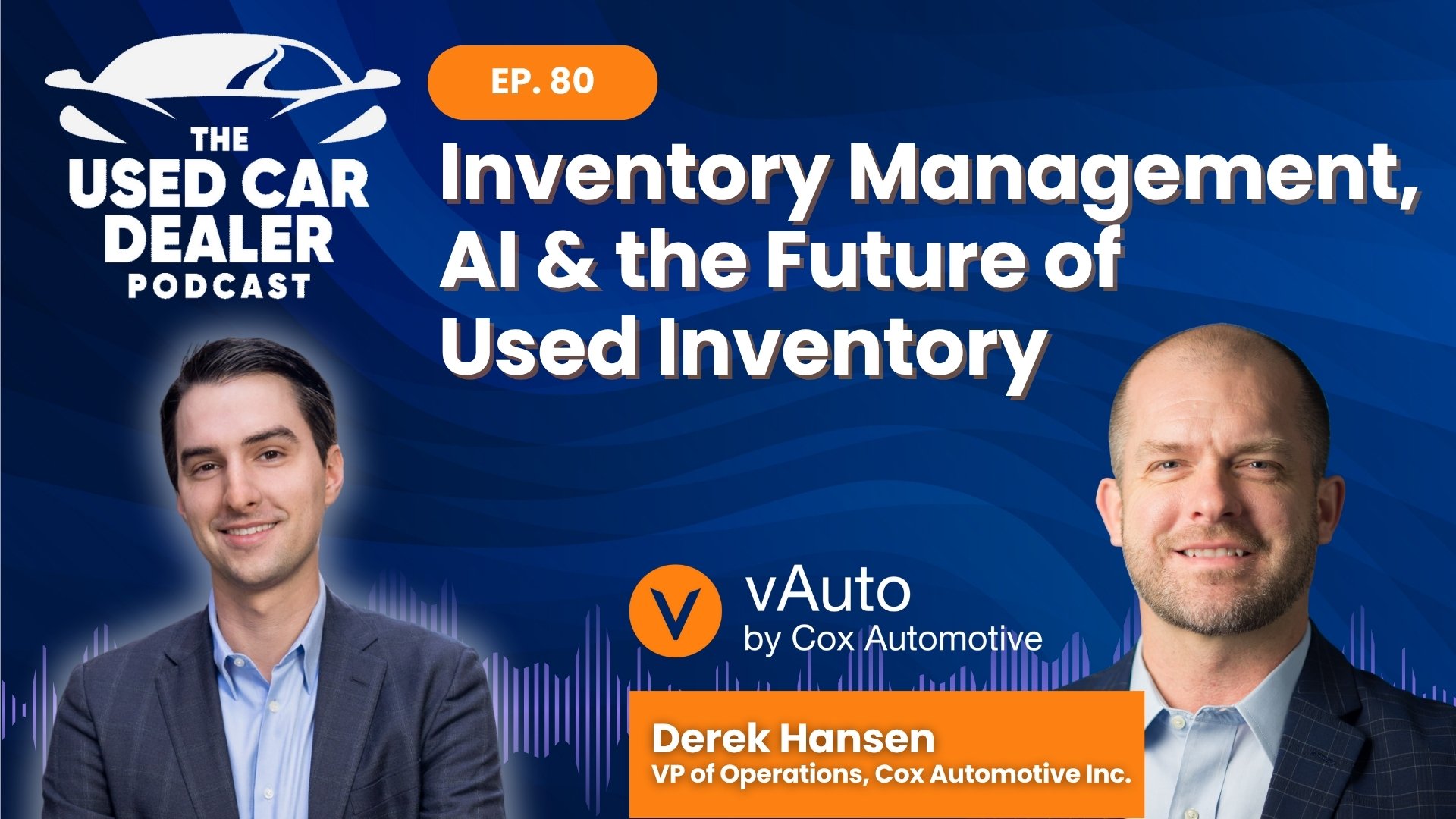In this transcribed episode of the Used Car Dealer Podcast, Zach sits down with John Traver, the founder of Traver Technologies and TraverConnect, to explore the evolution of the BDC concept and how it extends into fixed ops. John shares insights on launching TraverConnect, transforming service-lane interactions into revenue opportunities, and balancing people with technology to deliver an exceptional customer experience. This conversation dives into leadership lessons, changing customer expectations, and the future impact of AI and automation on automotive retail.
Zach: Zach here, and welcome to the Used Car Dealer Podcast. Today we’re joined by a true pioneer in the auto industry, John Traver, the founder and CEO of Traver Connect. John is credited with inventing the original BDC model for dealerships back in 1991 and built a career at the intersection of innovation, fixed ops, and customer engagement. John, you’ve seen it all in the industry—thanks so much for joining me on the podcast today.
John: Zach, thanks for having us. What a treat to be part of your podcast. I might not have seen it all, but I’ve seen a little, and it keeps me coming back for sure.
Zach: Thanks. And John, take us back to how you got in the auto industry—your origin story.
John: I stumbled into it, almost by accident. I started on the showroom floor in the ’80s, working at Wilde Dodge in Waukesha, Wisconsin, while paying my way through college. Early on, they kept sending me to Chrysler workshops—parts, service, F&I—because they needed certain credits, and no one else wanted to go. So within that first year, I got this broader “macro view” of how the dealership was supposed to work.
The reality, though, was we weren’t actually doing things the way the workshops taught. I noticed a lot of gaps. At the same time, consumers were getting smarter. Back then, the internet wasn’t in play yet, but magazines like MotorTrend, Car and Driver, Road & Track, and Consumer Reports started listing invoice pricing. Now customers knew a lot more about what the vehicle cost. There were also more vehicles and models on the market—so people naturally took more time to shop. Meanwhile, many dealers still wanted to close them on the first visit. And that didn’t align with a changing reality.
I also saw turnover—people cycling in and out because they only worked “fresh ups” on the lot. I found that if you learned to work the phones, build rapport, and follow up, you’d convert a lot more sales and develop a real book of business. So that’s what I did early on: gather phone-up data, do consistent follow-up, and so on.
When I started Traver Technologies, there were already bits of a “phone room” idea out there, like what Tom Stuker did, but I wanted a more holistic approach—software, a structured process, a “college” to train BDC managers. Over 20 years, we trained something like 20,000 managers. So it was about using phone calls, building relationships, and systematically following up, not just relying on fresh ups.
Zach: So talk about the early days of BDC adoption—how did it go? Were dealers skeptical?
John: In the early ’90s, we had the Gulf War going on—economically, it was a weird time. Some dealers totally got it; others were skeptical. I’ll give you an example: one of our early clients was Rohrich Toyota in Pittsburgh. We helped them convert more of their showroom traffic, and while their year-over-year unit sales only went up by maybe 50 or 75 cars, it was significant because everyone else in the area had dropped thanks to market conditions. So even though the raw number wasn’t huge, they’d moved from near the bottom of the district to near the top.
Of course, there were dealers who saw “BDC” as just a phone room. I had to explain that we were really building a culture of predictable showroom traffic via appointments—a system that also improves turnover because salespeople make more money from these scheduled appointments. I remember organizing a “Management Awareness Conference” to show dealers the “appointment ratio”: if you have ten salespeople and ten confirmed appointments for that day, that’s a 1-to-1 ratio. Maybe you sell five or six cars. If it’s a 2-to-1 ratio—20 appointments to 10 salespeople—you’ll break records. And if it’s 3-to-1, you might need extra parking for inventory because you’re going to explode. Once dealers grasped that, it often clicked.
But adoption was uneven. Some folks embraced it quickly, while others gradually came around once they saw the evidence in better sales, happier staff, and less turnover.
Zach: What were some of the biggest operational challenges as you scaled out your business?
John: Early on, one challenge was software. Our first system was DOS-based—just a green screen with a few data fields and reports. There were no CRMs back then, no texting, barely any email. Everything was phone calls and typed input.
Another major challenge was training—getting dealers to invest in learning and development. I started by asking them to “re-appropriate” some of their ad budget into training the people receiving all those leads, so they could convert more. Because if you’re spending thousands a month to generate traffic, it’s smart to invest in the folks who handle that traffic.
Data was also scattered—DMS systems didn’t track phone-ups. And we needed a place for that information. It was messy; we were basically building the plane while flying it. But every obstacle taught us a lesson, and we refined our process and products over time.
Zach: How did the different services you offer evolve as technology and dealership operations grew more complex?
John: We always tried to keep the customer at the center—the empty chair in the room, so to speak. Initially, I focused on training because there was a teaching gene in me. Then software got added once I realized we needed a system to house all this information and track results. We started layering on data insights, thought leadership for management, a “BD college” for managers—the idea was a complete ecosystem.
Over time, everything kept advancing. Eventually, we integrated more real-time scheduling, confirmation texts, bridging front-end and fixed ops. Now at Traver Connect, after selling Traver Technologies to ADP, we focus heavily on service BDC. We’re constantly asking: “What do they need next?” And because we listen to dealers, the ideas just keep coming.
Zach: What separates a top-performing dealership—one using your BDC service well—from one that’s not as organized?
John: High performers practice clarity and execution. They avoid what a mentor of mine, Bobb Biehl, called “the three big pitfalls of leadership”: fog, fatigue, and flirtations.
Fog is lack of clarity. Without clarity, you slow down, and your team can’t move forward.
Fatigue is when you’re overworked and start cutting corners.
Flirtations can mean moral lapses, but also chasing random ideas that don’t align with your main goals.
Top stores eliminate confusion by defining goals and metrics. For a service BDC, that’s things like calls answered, appointments set, show rates, and so on. They see these interactions not as a cost but as an investment in customer experience and revenue. Struggling stores get stuck in chaos—poor data tracking, weak staff training, or viewing BDC as just phones instead of a strategic asset.
Zach: How do you strike that balance between people, process, and technology?
John: You need alignment and a willingness to change. Remember that not everyone’s ready for change at once. About 25% are “change friendly,” 50% are on the fence, and 25% are “resistors.” Focus on enabling that 25% who are eager, and the 50% on the fence will follow them. If you can align 75% of your operation, you’ll move mountains.
The best stores commit from the top down. The GM sets the tone, the service manager tracks metrics, the software monitors real-time performance, and they treat us like a partner, not just a vendor. They create a culture of accountability and ongoing development. That’s how you balance people, process, and tech—by being intentional about each one and aligning them toward the same goals.
Zach: How have customer expectations in the service department changed over the last 10 years, and how should dealers adapt?
John: Customers want convenience, transparency, and a good experience. You don’t have to adapt—but you’d better if you want to thrive. That can mean digital scheduling, text updates, or even pickup and delivery. One dealer I know in a smaller market has a fleet of used cars driven by retirees to swap out for a customer’s vehicle, so the service can be done without the customer being inconvenienced. That’s how you build retention—you make it super easy and create a unique experience.
Zach: What do you see as the biggest technology gaps today in fixed ops or BDCs?
John: Integration, for sure. Too many stores have separate CRMs, scheduling tools, DMS data, and none of it talks to each other. It’s disjointed and creates friction for both employees and customers.
Also, real-time analytics are a big gap. A store might not know how many calls turn into appointments each day, or why some people won’t wait two weeks to be seen. You need immediate visibility—if 20 customers say, “I can’t wait two weeks,” that’s an opportunity to pivot, maybe offer pickup service, or figure out how to expand capacity. Without real-time data, you’re just guessing.
Zach: Any thoughts on AI and automation coming to market right now?
John: AI and automation are definitely game changers, but I see them as enhancers, not replacements. In a BDC, AI can handle certain repetitive tasks, triage basic service questions, or flag keywords in calls. But I don’t think we should lose the human touch, especially in something as relationship-driven as auto retail.
If AI boosts efficiency and accuracy, awesome. But you can’t let it degrade the customer experience. It should be a force multiplier—just make sure you don’t over-rely on it to the point that customers feel like they’re just dealing with bots.
Zach: As we look to 2025 and dealers getting more cost-conscious, where should they focus to drive the highest ROI?
John: Double down on fixed ops. It’s the highest-margin part of the business, especially if you’re a used-car operation with reconditioning and such. Streamline your processes: cut wait times, schedule effectively, upsell responsibly. Also invest in learning and development. A well-trained team can turn a $50 oil change into a $400 maintenance visit without ever feeling like you’re ripping people off.
Don’t overlook outsourcing for certain roles if it’s more cost-effective. Look at how JM&A is rolling out virtual F&I for stores that can’t support a full-time manager. Same logic applies to BDC. Sometimes “selling the mailroom,” as Peter Drucker said, is the smart move—meaning focus on core areas and outsource the rest to specialists.
Zach: Finally, what are you most excited about in the next year for Traver Connect and the automotive space generally?
John: Internally, I’m excited about our people. Our mission is “making experience matter”—for our clients, consumers, and our own team. We’re rolling out new tools that bridge sales and service better, with real-time scheduling and screen pops so we respond to web forms in 20 seconds. Simple but powerful stuff.
Industry-wise, I think remote buying and servicing will keep growing. Consumers demand convenience, and the technology’s there. I’m also excited to see dealers realize they can innovate on both new and used. If they do it well, they’ll build a moat around their business. So yeah, I’m fired up for what’s next.
Zach: Awesome. Well, John, thanks again for joining me on the podcast. It’s been great.
John: Thanks, Zach. I appreciate it—been our pleasure.
UCDP #72 – Automotive BDC & Fixed Operations with John Traver
March 28, 2025|
Zach Klempf
.jpg)
Tags: used car dealers automotive industry auto industry NIADA auto industry trends used car market independent dealership





.jpg)
.jpg)
.jpg)
.jpg)


.jpg)
.png)
.png)
